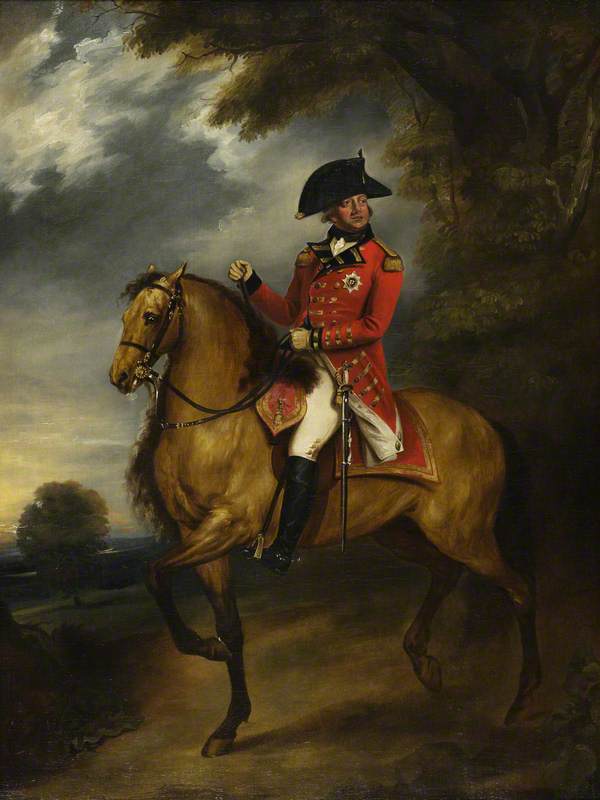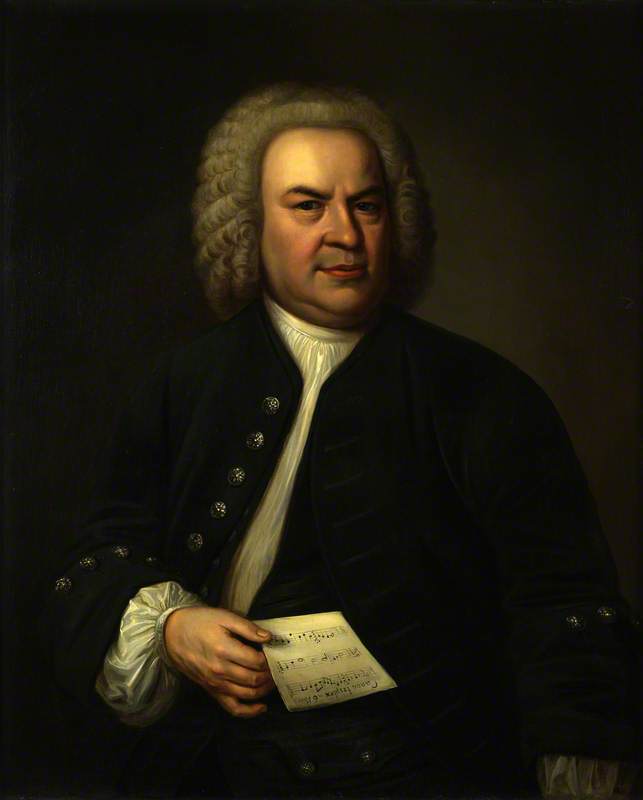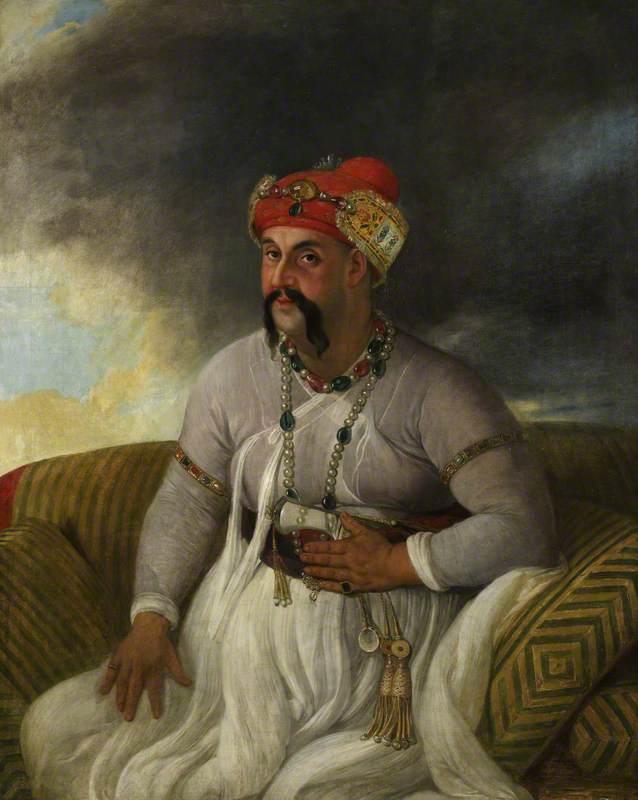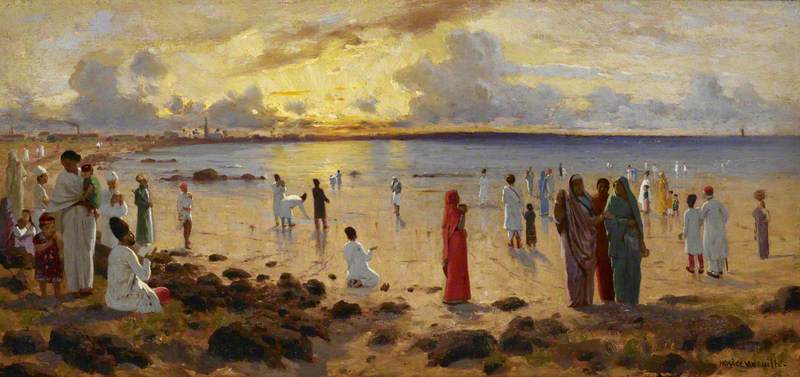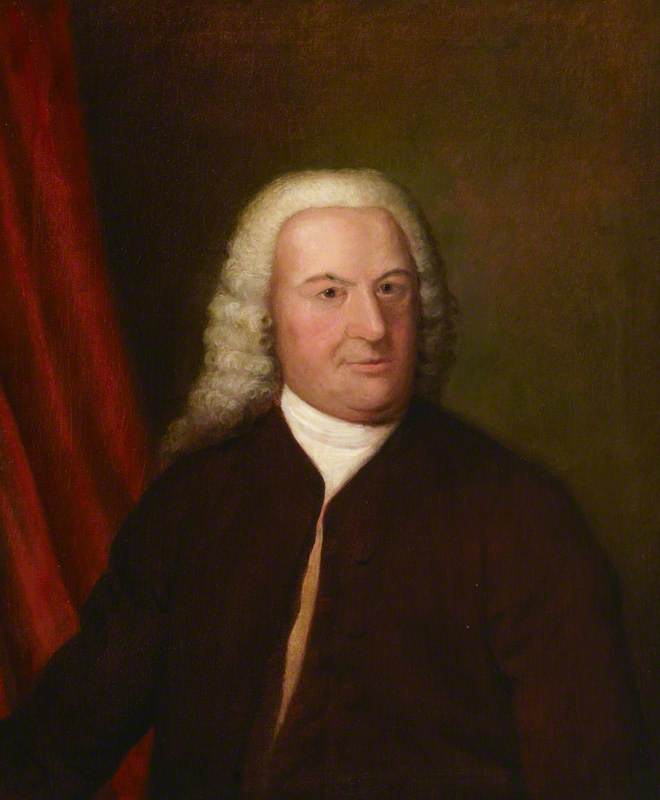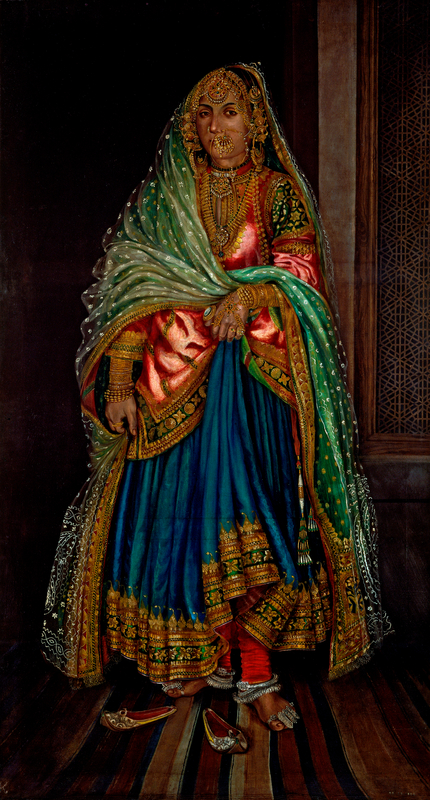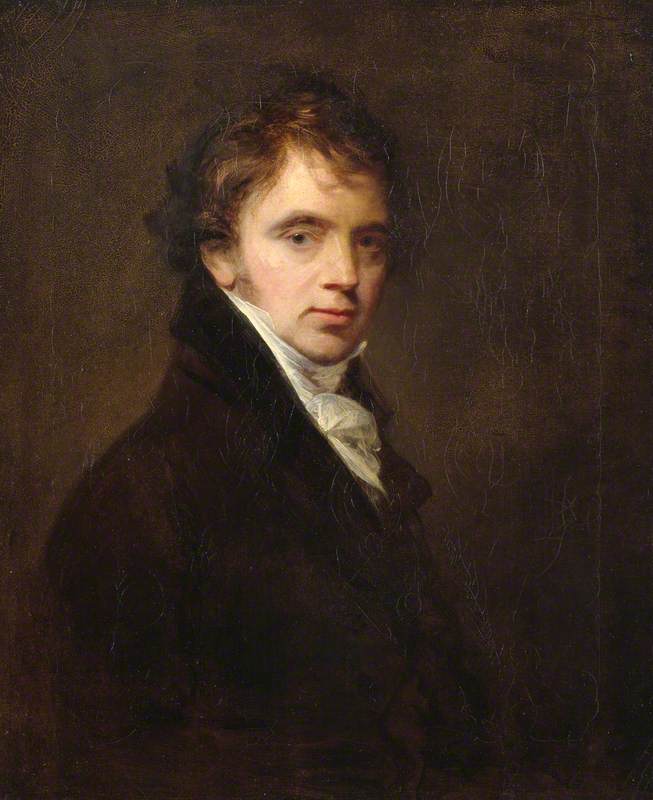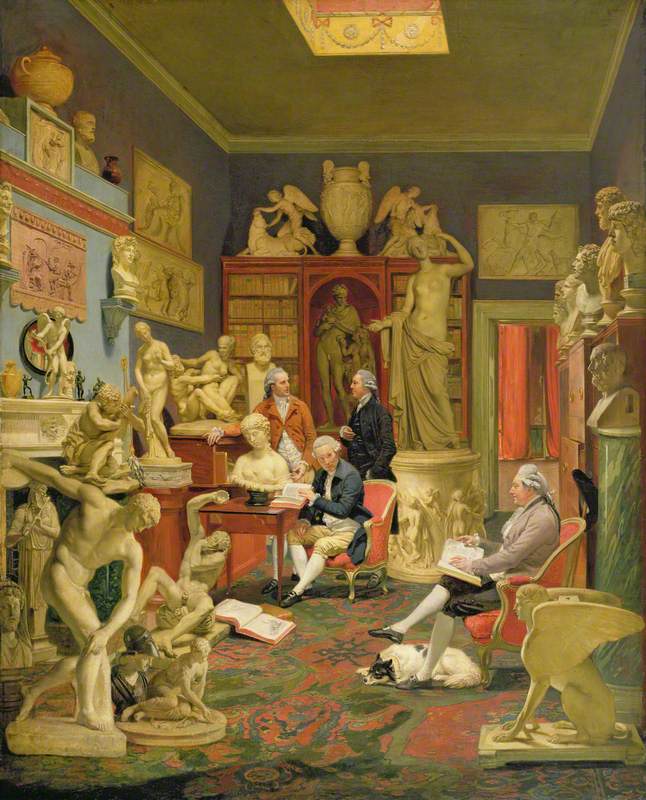The British Library is the national library of the United Kingdom. It came into existence in 1973 as a result of the British Library Act. Parliament’s vision was for a single institution at the heart of the UK’s information network, which would aid scientific and technological research, business, the arts and humanities.
The Library’s art works reflects its history and broad scope of its collections. The majority of the art works, however, are historically connected with British colonial rule in Asia, as the former India Office Library and associated collection of paintings and sculpture was absorbed into the British Library in 1982.
Art Unlocked is an online talk series by Art UK in collaboration with Bloomberg Philanthropies. This Curation is based on a talk by Dr Malini Roy, Head of Visual Arts at the British Library, on 19th July 2023. You can watch a recording of the talk on Art UK's YouTube channel.
-
Sir Colin St John Wilson (1922–2007)
Colin St John Wilson was the principal architect of the British Library. Over a 30 year period, Wilson and his team designed and oversaw the construction of the national library which opened to the public in 1998.
In recognition of his achievement, the Library commissioned sculptor Celia Scott (b.1947) to make a portrait bust of the architect. Scott opted to feature Wilson wearing his characteristic scarf wrapped around his neck. The bust was placed on public display in the main entrance hall, in a specially designed nook, at an elevated height that could be easily viewed by visitors to the Library.

-
Interior of the British Library
Interior of the British Library 1990sCarl Laubin studied architecture at Cornell University. In the 1980s, Laubin turned his attention to architectural paintings and prepared a series on the redevelopment of the Royal Opera House in London and would continue painting in this genre throughout his career.
Carl Laubin’s hyper-real painting of the interior of the British Library was based on the architectural drawings by Colin St John Wilson and his team. Almost photographic in detail, Laubin illustrated a view of the Library’s café and the imposing King’s Library, a glass tower, on the right. As an homage to the architect, Laubin cleverly added the architect with his distinctive grey hair and dressed in a suit in the painting’s foreground where he speaks to researcher holding a stack of leather bound books. In the café, it is thought that Laubin inserted a number of historical authors including T.S. Eliot and Fyodor Dostoyevsky. A second version of Laubin’s interior view of the Library is held in the RIBA collections, where Wilson and his partner M. J. Long stand peering over the plants.
unknown artist
Oil on board
H 86.5 x W 76.5 cm
British Library
-
George III (1738–1820), on Horseback
George III (1738–1820), on HorsebackSir William Beechey (1753-1839) was a leading portraitist in the ‘golden age’ of British painting. He studied under Johan Zoffany at the RA Schools and developed a restrained style which suited the conventional taste of George III and Queen Charlotte, so that by 1793 he was officially named portrait painter to Queen Charlotte and received many more royal commissions. His 1798 painting George III and the Prince of Wales Reviewing the Troops so delighted the king that Beechey was knighted. This was the only painting to be destroyed in the 1992 Windsor Castle fire, but a smaller version exists in the National Army Museum. This also spawned several reduced studio versions showing just the figures of George III and horse. Equestrian portraits for monarchs have been common in British art since van Dyck’s portraits of Charles I, as they confer status on the sitter and set them within the chivalric tradition.
William Beechey (1753–1839)
Oil on canvas
H 80 x W 61 cm
British Library
-
Johann Sebastian Bach (1685–1750)
Johann Sebastian Bach (1685–1750)Johann Sebastien Bach (1685-1750) was a leading German composer of the late Baroque period. A revival of his work in the 19th century cemented his reputation as one of the greatest composers in the history of Western music (and likely prompted this copy of his portrait).
This 19th-century copy (probably 1830) of a 1748 original portrait of the composer J.S. Bach is by Elias Gottlob Haussman (1695-1774). The original is thought to be the best contemporary likeness of Bach, and is in the Museum of City History, Leipzig. It is Haussmann’s best known work, and shows the composer holding the sheet music for his ‘riddle canon’, a complex composition for six voices that loops back on itself perpetually.
Elias Gottlob Haussmann (1695–1774) (after)
Oil on canvas
H 106 x W 90 cm
British Library
-
Asaf-ud-Daula, Nawab of Oudh (1775–1797)
Asaf al-Daula, Nawab of Oudh (1775–1797) 1784Western artists travelling to the Indian subcontinent in the 18th century, needed permission from the British East India Company to travel inland to cities such as Lucknow, located in the northern province of Oudh. John Smart, Ozias Humphrey and Johann Zoffany are some of the key artists that were successful in travelling to the flourishing metropolis and obtaining commissions from either British officers or local Indian noblemen.
The provincial governor of Oudh, Asaf al-Daula (ruled 1775-97), commissioned Zoffany to paint portraits of himself as well as his chief minister Hasan Reza Khan. In this work, the governor is featured in a white floor length muslin garment and adorned with necklaces and armlets of pearls and precious gems. He wears the distinctive Lucknow style of turban with a crescent band.
According to a contemporary inscription on the back of the painting, the governor presented the painting as a gift to British surgeon Francis Baladon Thomas, who was stationed at the Lucknow Residency, in 1784. The ornate frame surrounding the oversized painting is adorned with the symbol of the province of Oudh, including a trophy of swords, flag and a fish.
Johann Zoffany (1733–1810)
Oil on canvas
H 127 x W 101.5 cm
British Library
-
Parsees at Prayer
Parsees at Prayer 1900–1920The Russian artist Horace van Ruith (1839-1923) regularly exhibited his portraits, genre scenes and landscapes in Germany, Austria and Italy before setting up a studio in western India. Between 1879 and 1884, van Ruith showed his new works at exhibitions through the Poona Fine Arts Society in Poona (Pune) and at societies in Bombay (Mumbai). As an accomplished artists working in both watercolours and oils, this rather small striking genre scene features the iridescent skyline and the shore of Bombay in the far distance with Parsis (Zoroastrians) praying in the foreground.
Horace van Ruith (1839–1923)
Oil on board
H 20.5 x W 43.5 cm
British Library

